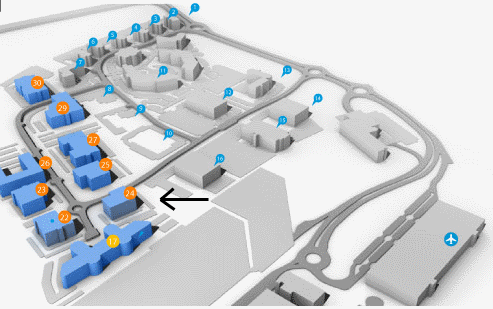Current Size: 100%

- Publications
- Cancer atlases
- 2.2.4.3 Socio-Economic Indicators
NCR books
- Cancer Atlas
- Acknowledgements
- Foreword
- Summary
- 1. Introduction
- 2. Methods
- 2.1 Geographical Terms
- 2.2 Data Included in the Atlas
- 2.3 Statistical Methods
- 3. Non-melanoma skin cancer
- 4. Breast cancer
- 5. Colorectal cancer
- 6. Lung cancer
- 7. Prostate cancer
- 8. Non-Hodgkin's lymphoma
- 9. Stomach cancer
- 10. Melanoma of the skin
- 11. Bladder cancer
- 12. Head and neck cancer
- 13. Leukaemia
- 14. Pancreatic cancer
- 15. Kidney cancer
- 16. Oesophageal cancer
- 17. Ovarian cancer
- 18. Brain and other central nervous system cancer
- 19. Cancer of the corpus uteri
- 20. Cancer of cervix uteri
- 21. Discussion
- 22. Conclusions and recommendations
- Appendix 1: Relative risks (with 95% confidence intervals) by area characteristic, cancer site and sex
- Appendix 2: Electoral division tables
- Appendix 3: Summary statistics for each cancer site
- Appendix 4: Regions referred to in the atlas
- References
- Index of figures, maps and tables
2.2.4.3 Socio-Economic Indicators
A range of area-based socio-economic measures is available from the population censuses in NI and RoI. However, the majority of these, particularly those relating to occupation and social class, use different definitions in NI and RoI, and are not directly comparable. Three measures were identified as having a degree of compatibility and have been used for analysis in this report:
- Unemployment–the proportion of the economically active population aged 16-74 who were unemployed (based upon the definition of unemployment from the International Labour Office (ILO))
- Educational attainment–the proportion of people aged 16-74 who had a university degree. Academic qualifications which were equivalent to a university degree were included; however, professional qualifications were not, as this information was not available in NI.
- Elderly living alone—the proportion of people aged 75 and older who lived alone.
These socio-economic measures had to be changed from those in the RoI cancer atlas (Carsin et al., 2009), as the necessary information was not available from the 2001 NI census.
Wards and EDs were ranked according to increasing levels of each of these three variables and were divided into population quintiles, (i.e. each quintile contained as close to 20% of the population as possible). The 20% of the population resident in areas with the lowest percentage of, for instance, unemployment, was assigned to quintile 1 while the 20% resident in areas with the highest percentage was assigned to quintile 5. All measures were based upon data for men and women combined from the censuses of 2001 in NI and 2002 in RoI.
Variations by country
Overall, 40% of the NI 16-74 year old population was economically inactive compared to 34% in RoI. Of the economically active population 7% in NI were unemployed in the 2001 census compared to 8% in the 2002 RoI census (Northern Ireland Statistics and Research Agency, 2003; Central Statistics Office, 2003). While, overall, 20% of the population of the island was resident in each unemployment quintile, 30% of the NI population lived in the areas of highest unemployment, compared to 16% of the RoI population (Table 2.5).
Among 16-74 year olds in RoI, 87% did not have a university degree (or academic equivalent) compared to 84% in NI. 25% of the RoI population lived in the areas with the lowest level of tertiary-level education in Ireland, compared to 10% of the NI population.
41% of the NI population aged 75 years and over lived alone, compared to 31% in RoI. 39% of the NI population lived in areas with the highest level of elderly living alone, compared to 12% of the RoI population.
Table 2.5 Population and number of areas (wards and EDs) included in each area-based socio-economic category
| RoI | NI | Ireland | ||||||||
| Quintile Range | Number of areas | Pop* | % of total population | Number of areas | Pop* | % of total population | Number of areas | Pop* | % of total population | |
| Unemployment; % of economically active persons, aged 16-74, who were unemployed | ||||||||||
| Least unemployed (Q1) | 0.0% - 3.5% | 967 | 754,815 | 19% | 114 | 358,345 | 21% | 1,081 | 1,113,160 | 20% |
| Quintile 2 | 3.6% - 4.7% | 695 | 894,496 | 23% | 78 | 225,691 | 13% | 773 | 1,120,187 | 20% |
| Quintile 3 | 4.8% - 6.2% | 672 | 831,031 | 21% | 104 | 283,577 | 17% | 776 | 1,114,608 | 20% |
| Quintile 4 | 6.3% - 8.6% | 593 | 803,616 | 21% | 121 | 320,098 | 19% | 714 | 1,123,713 | 20% |
| Most unemployed (Q5) | 8.7% - 47.3% | 428 | 610,592 | 16% | 165 | 507,827 | 30% | 593 | 1,118,419 | 20% |
| Total | 3,355 | 3,894,549 | 582 | 1,695,538 | 3,937 | 5,590,087 | ||||
| Education; % of persons aged 16-74 without a university degree (or academic equivalent) | ||||||||||
| Least with no degree (Q1) | 44.5% - 81.0% | 239 | 691,541 | 18% | 123 | 425,072 | 25% | 362 | 1,116,612 | 20% |
| Quintile 2 | 81.1% - 86.2% | 319 | 682,943 | 18% | 146 | 434,777 | 26% | 465 | 1,117,720 | 20% |
| Quintile 3 | 86.3% - 89.5% | 557 | 714,096 | 18% | 149 | 402,893 | 24% | 706 | 1,116,989 | 20% |
| Quintile 4 | 89.6% - 92.7% | 978 | 847,567 | 22% | 110 | 271,190 | 16% | 1,088 | 1,118,757 | 20% |
| Most with no degree (Q5) | 92.8% - 100.0% | 1,262 | 958,403 | 25% | 54 | 161,606 | 10% | 1,316 | 1,120,009 | 20% |
| Total | 3,355 | 3,894,549 | 582 | 1,695,538 | 3,937 | 5,590,087 | ||||
| Elderly living alone; % of persons aged 75 and older living alone | ||||||||||
| Least 75+ living alone (Q1) | 0.0% -24.4% | 843 | 1,003,543 | 26% | 37 | 110,246 | 7% | 880 | 1,113,789 | 20% |
| Quintile 2 | 24.5% -30.6% | 681 | 897,794 | 23% | 83 | 222,320 | 13% | 764 | 1,120,114 | 20% |
| Quintile 3 | 30.7% -35.7% | 589 | 796,720 | 20% | 108 | 322,087 | 19% | 697 | 1,118,807 | 20% |
| Quintile 4 | 35.8% -42.5% | 663 | 745,285 | 19% | 134 | 373,596 | 22% | 797 | 1,118,882 | 20% |
| Most 75+ living alone (Q5) | 42.6% -100.0% | 579 | 451,207 | 12% | 220 | 667,288 | 39% | 799 | 1,118,495 | 20% |
| Total | 3,355 | 3,894,549 | 582 | 1,695,538 | 3,937 | 5,590,087 | ||||
* Annual average of combined 1995-2007 population.
Correlation between socio-economic measures and population density
The three socio-economic measures and population density had varying degrees of correlation. However while the correlation coefficients between several of the measures were statistically significant, none represented a high level of correlation. The highest correlation was a negative association between education and population density (-0.365) (Table 2.6).
Table 2.6 Correlation coefficients (Spearman’s rank) for ward/ED characteristics
% of economically active persons aged 16-74 who were unemployed | % of persons aged 16-74 without a university degree (or academic equivalent) | % of persons aged 75 and over living alone | |
Population density | 0.231 | -0.365 | 0.112 |
% of economically active persons aged 16-74 who were unemployed | 0.197 | 0.147 | |
% of persons aged 16-74 without a university degree (or academic equivalent) | 0.008 |
Geographic distribution of socio-economic measures and population density
Map 2.3 shows Ireland divided into approximate population density tertiles (<1 person/hectare, 1-15 persons/hectare and >15 persons/hectare). As expected, only geographic areas at the centre of large towns and cities, such as Belfast and Dublin, fell into the highest tertile. The majority of wards/EDs in Ireland had a population density of less than 1 person/hectare.
Map 2.4 shows the percentage unemployed in each ED/ward by quintiles. Areas of highest unemployment were found in north and west Belfast, north-west Ireland (including Donegal, Derry and Strabane), the west of Ireland (including Mayo) and parts of Newry & Mourne and Louth.
Low levels of tertiary-level education (as illustrated in Map 2.5) were found in rural parts of RoI, north and west Belfast, north-east Dublin and south-west Dublin. High levels of tertiary education were found in south Belfast and surrounding areas, central and southern Dublin and surrounding areas, and other urban areas and their environs in RoI, such as parts of Cork, Galway and Limerick.
Areas with high proportions of elderly persons (aged 75 and over) living alone were fairly randomly spread across Ireland, as seen in Map 2.6. The proportion was relatively high in Dublin and Belfast city centres, but low in the surrounding areas.
Building 6800
Cork Airport Business Park
Kinsale Road, Cork T12 CDF7
Email Contact us here
Tel: +353 (0) 21 4318014
Fax: +353 (0) 21 4318016




